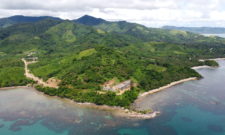In order to develop its land reserves and to assert itself as an industrial power and economic centre of mainland Southeast Asia, the Thai Parliament signed the Eastern Economic Corridor Act (EEC) in February 2018.
This new law, which is part of the Thailand 4.0 strategy, aims at a general objective of upgrading the Thai economy by stimulating innovation, creativity and a better consideration of sustainable development. A promising objective for those interested to invest in Thailand properties.
The project involves the creation of a gigantic 13,000 km² industrial zone between the provinces of Chachoengsao, Chonburi and Rayong, in the east of Bangkok. The EEC’s presence in these provinces reveals a determination to strengthen the economic weight of an area that is already a pioneer in the petrochemical, automotive and energy industries.
The deployment of this “economic zone” will result in substantial investment, both in infrastructure development and in the development of the sectors targeted by the Thai government.
In fact, the government has selected about ten strategic sectors, which demonstrate the desire to move towards higher value-added production.
These include medical and wellness tourism, aviation and logistics, biofuels, “new-generation” vehicles, “intelligent” electronics and robotics, agriculture and biotechnology, agribusiness and, lastly, digitalisation (with the development of e-commerce).
3 major projects for 2020
Earlier this year, the Thai government confirmed the signing of contracts for the three main EEC projects by the end of the first quarter of 2020.
- The U Tapao aeronautical city
Currently a naval airbase that also hosts few civil flights, U Tapao airport will be able to accommodate 15 million passengers per year after its transformation.
It will also benefit from an aviation maintenance centre, as it is destined to become a regional aircraft maintenance centre for southern ASEAN.
- Laem Chabang Port
Thailand’s main port for containers and cargo, it is considered a major entry point into Asia. The EEC project complements the country’s port development by the extension of the Map Ta Phut port, specialized in raw materials, and the Sattahip naval base as a possible tourist terminal.
- The north-south railway line
In order to improve the transit of goods, a railway line linking the main centres and transit points of the region, ports and airports will be put in place. The proposed railway line would also create a traffic route between the Gulf of Siam and southern China.
Substantial investments
Today, 405 billion baht of investments have been registered according to the Thai government.
In order to attract private investors, a law specific to the geographical area delimited by the EEC was implemented in March 2018, with a series of tax and non-tax incentives offered by the Thailand Board of Investment (BOI) ; such as a reduction in corporate tax and a cap on expatriate executives’ income tax, long-term leases (50 + 49 years) granted to investors, accelerated procedures for the approval of public-private partnerships and 5-year work permits granted to international investors.
According to government projections, the EEC’s annual turnover is expected to approach 300 billion baht once all the infrastructure is in place.




Leave a comment